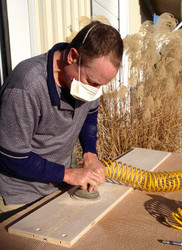The Evolution of the Bookcase
Posted by Jenna Levy on 8th Sep 2016
Bookcases are weird. No doubt about it. Someone, way back when, decided it would be a handy organizational tool to put books on their sides, side by side in many bunches, up against a wall. Who does that?
The crazy thing is, we don't even question it. We don't question many of the evolutions in our day-to-day life. We're fortunate that so many artists and scientists have come before us and paved the way with knick knacks and processes that we assume to be part of our days.
But allow us to nerd out a bit. Here are some little-known facts about the history of the bookcase:
1) Private libraries first appear in history books during the later years of the Roman republic.
2) Imperial China referred invented the revolving bookcase under the leadership of Fu Xi in 544, which they called the zhuanluntang (there's your word of the day). These became super popular in Buddhist monasteries.
3) Those who owned fewer books, or wrote books by hand (instead of using a printing press), carried their books around with them in small boxes or chests. These chest were the great-great-great-great grandparents of the bookcases and shelves that we see today.
4) The door was the first thing to go on these cabinets, but books were still placed in piles. Some genius realized that the leather or vellum-bound spine of the book was the perfect place to inscribe the title. The same genius probably realized that it was great marketing to have this area of the book facing the public. Ah, evolution.
5) The oldest bookcases which you can find in England (and in modern civilization), are at the Bodleian Library at Oxford University. Architects had a tough time with the bookcases installed here. They found them very severe. They tried to soften the look and feel with inclusions like pilasters and carved-cornices.
Feeling like an expert? We thought so. While you're at it, mosey on over to the Decibel Designs selection of bookcases.
